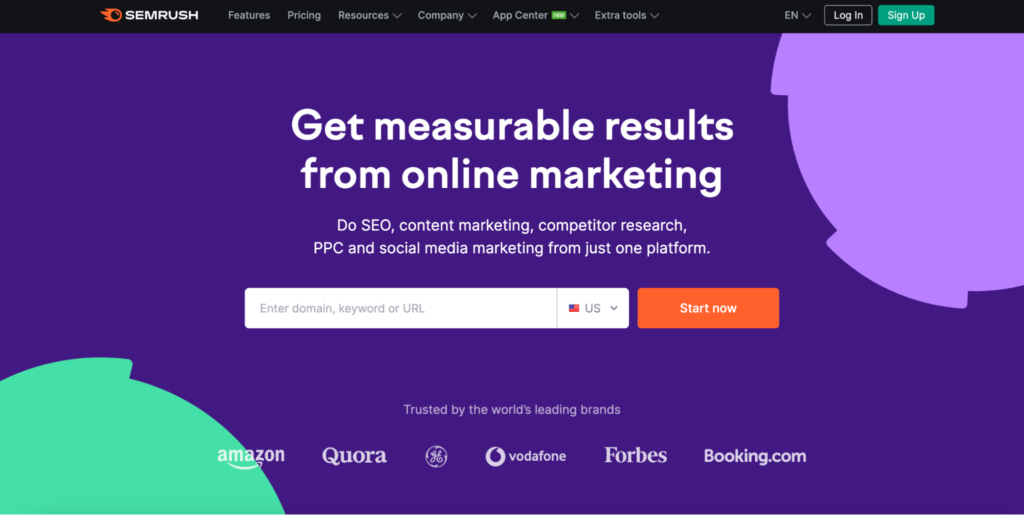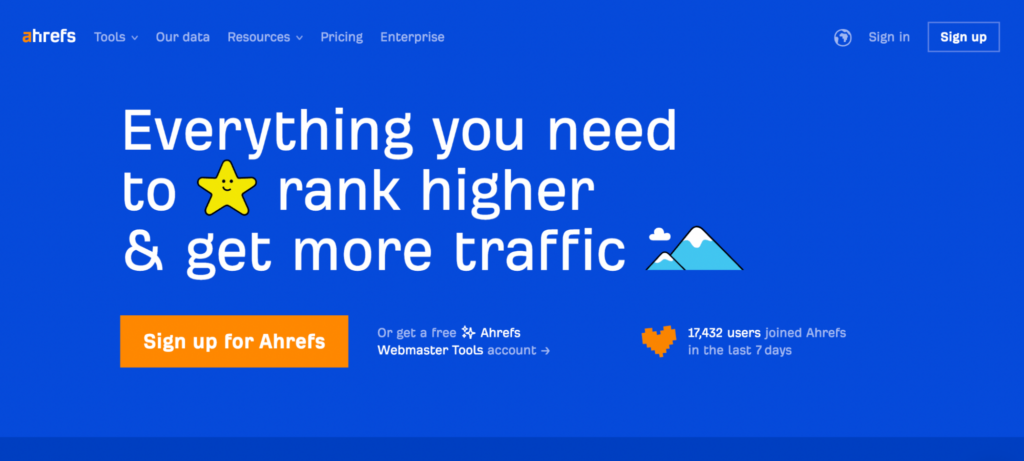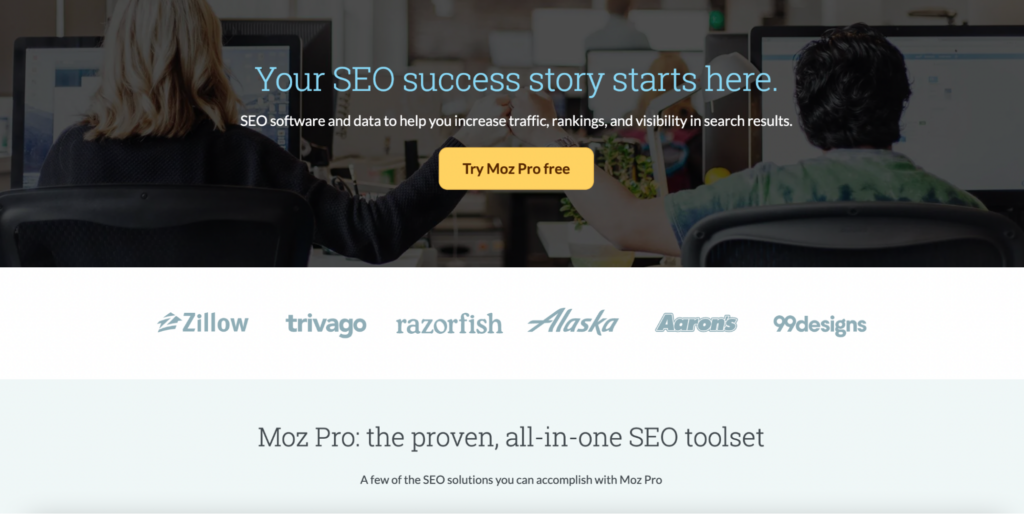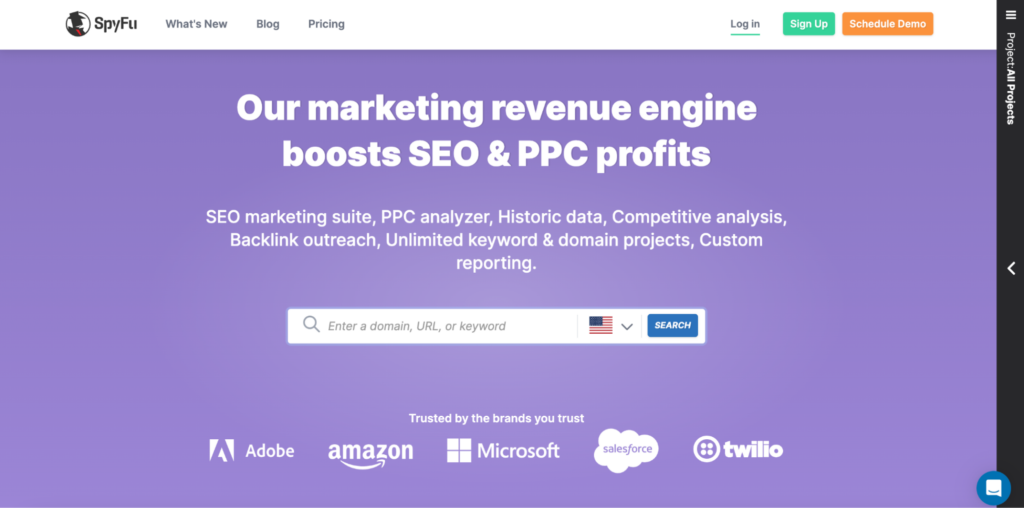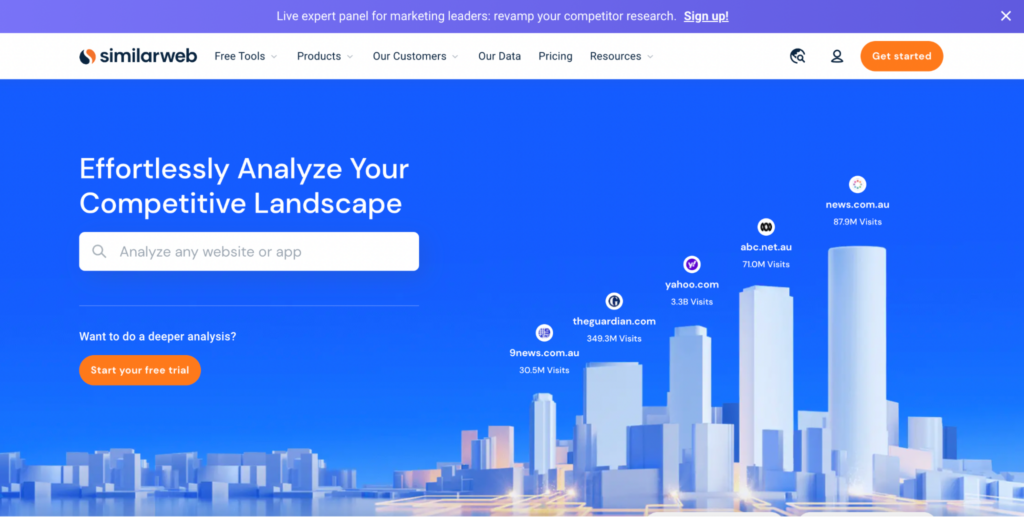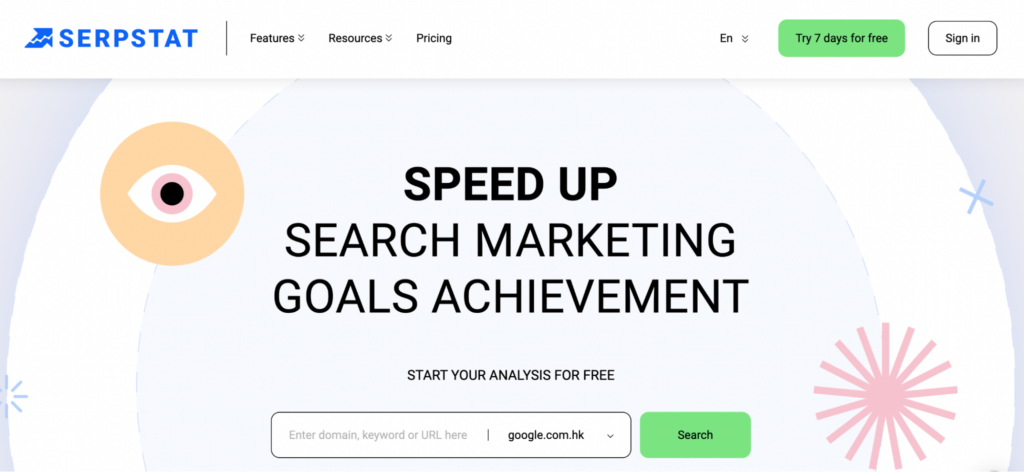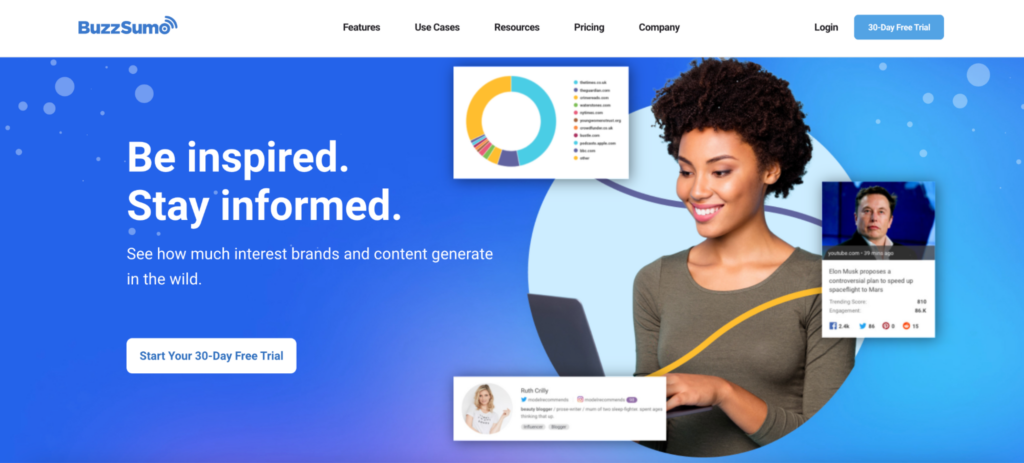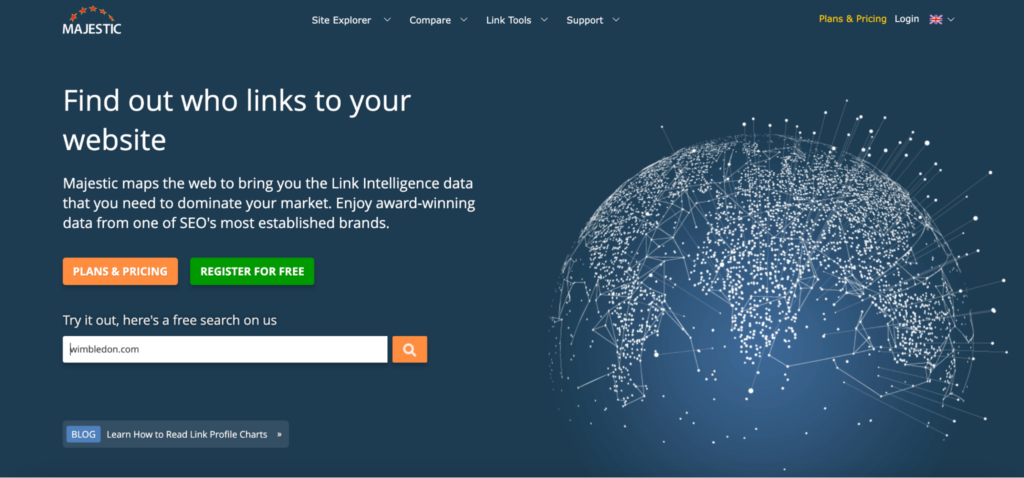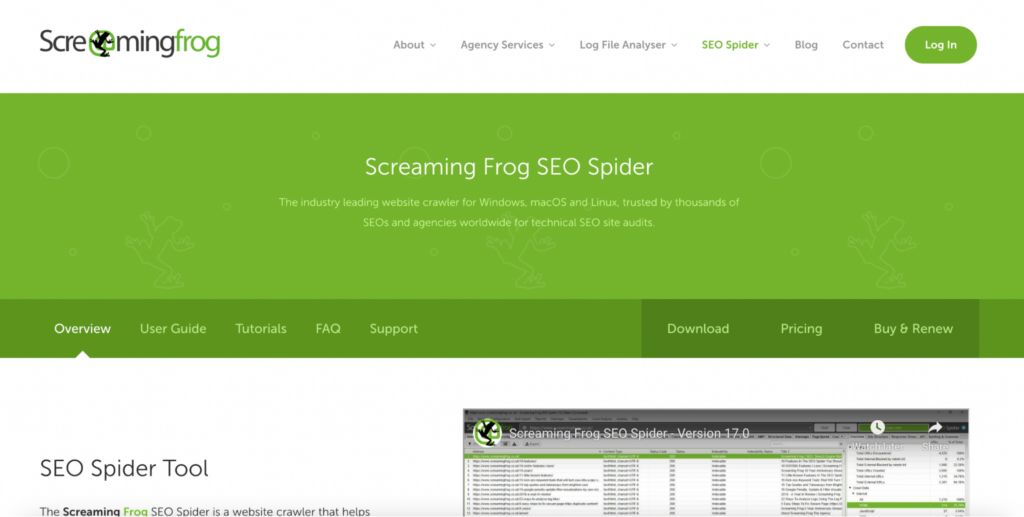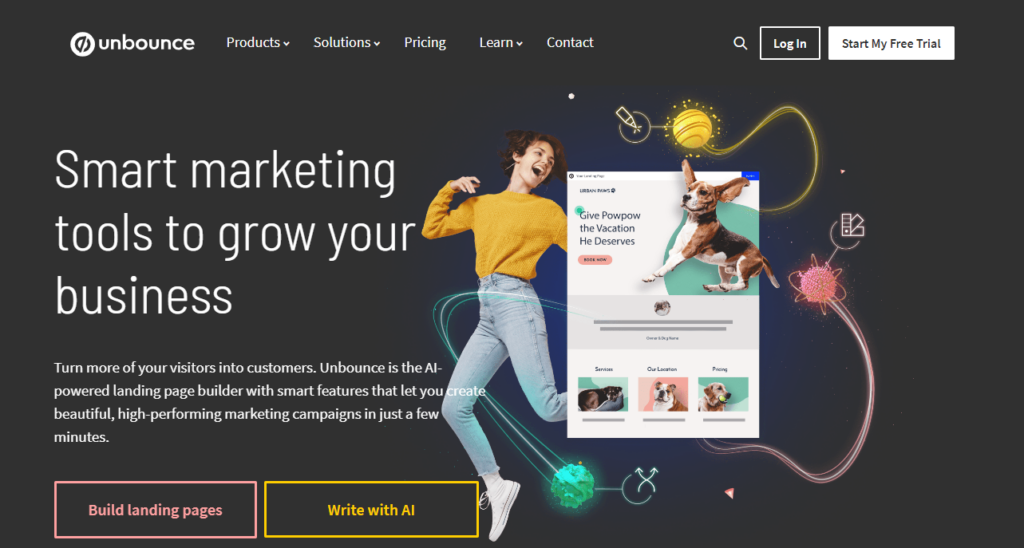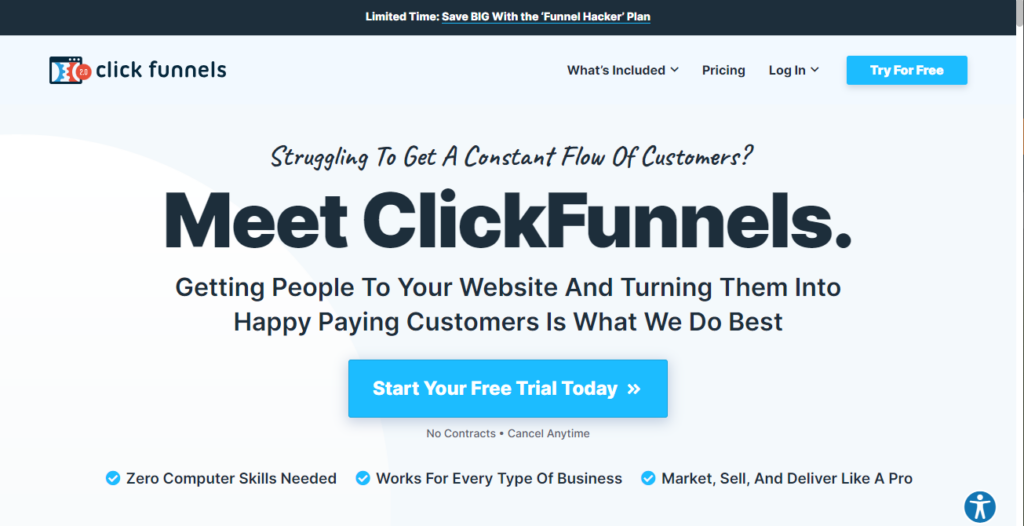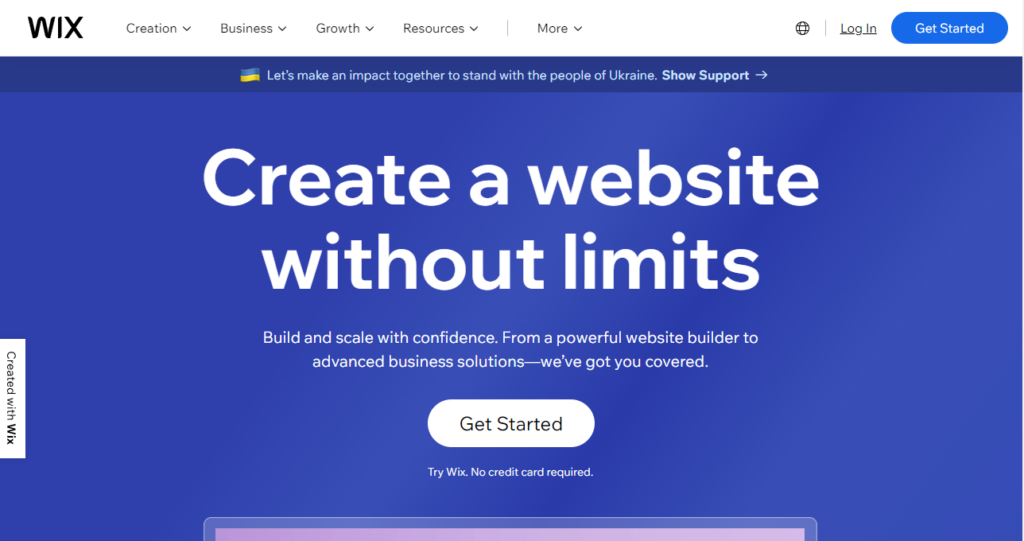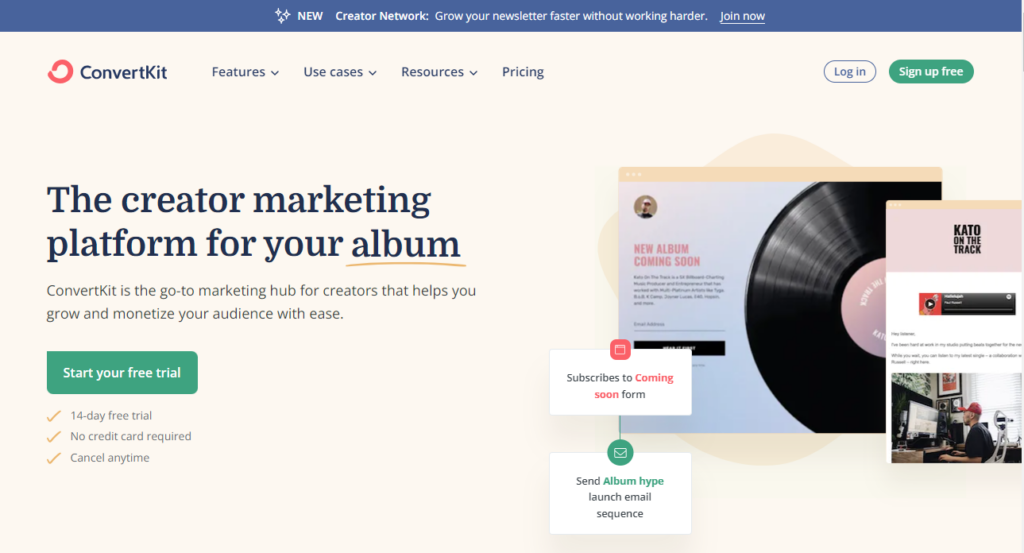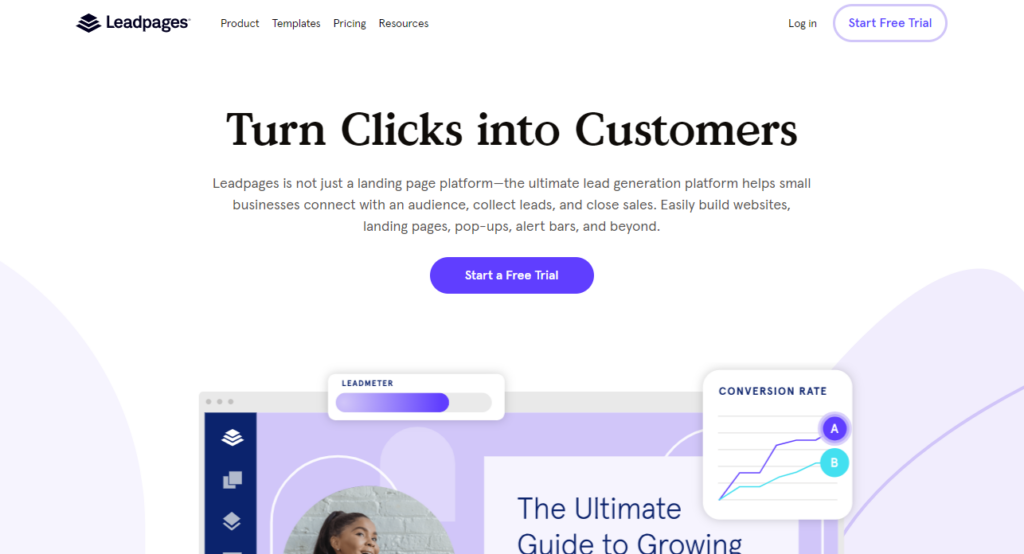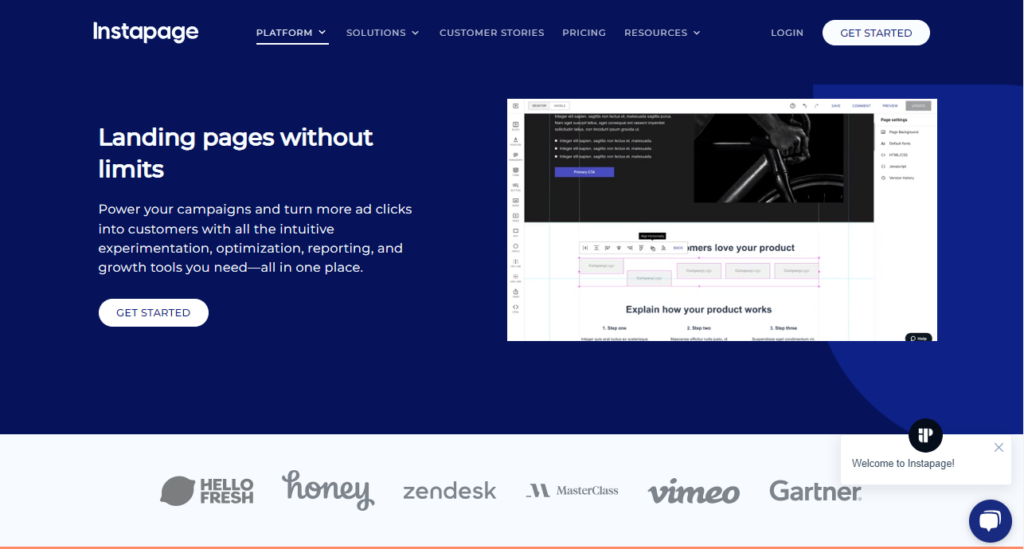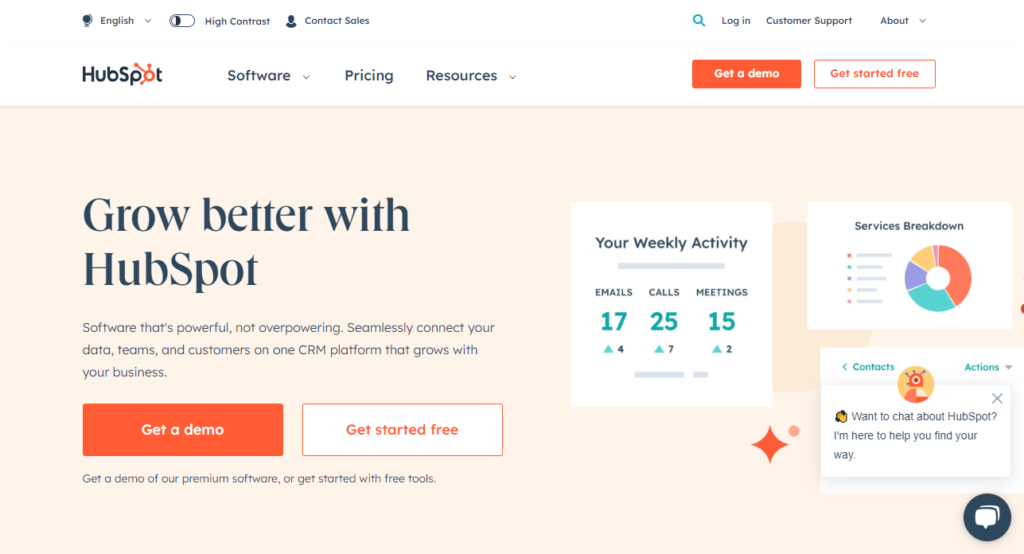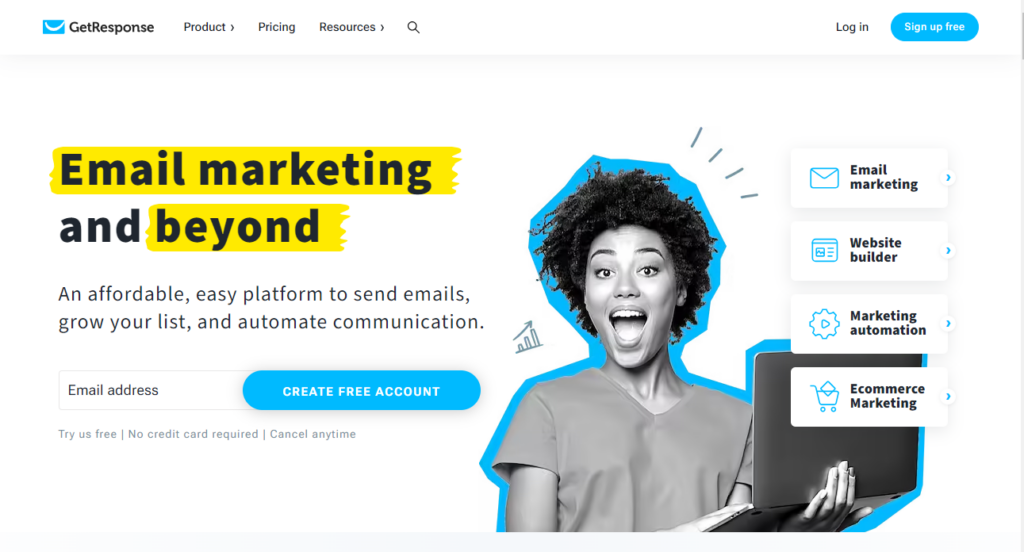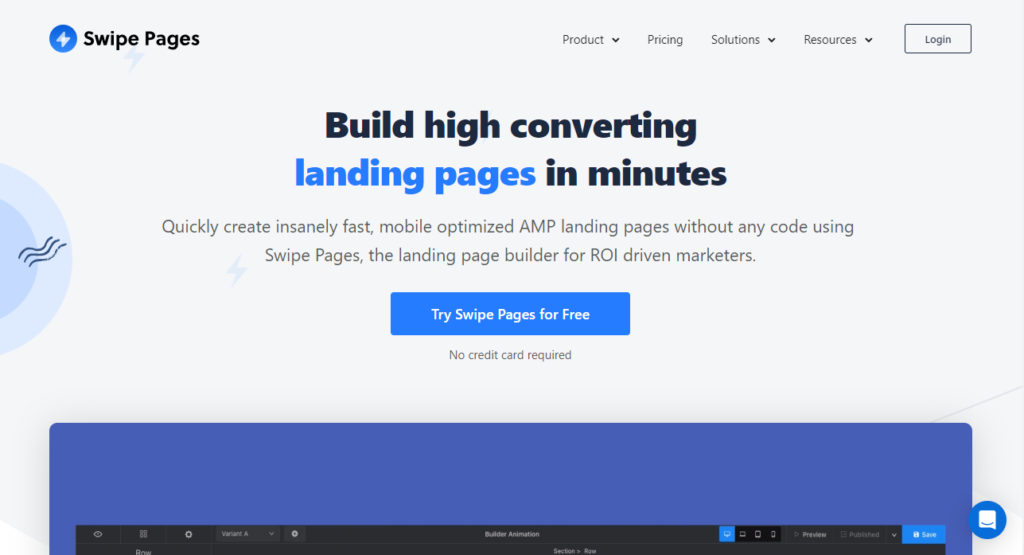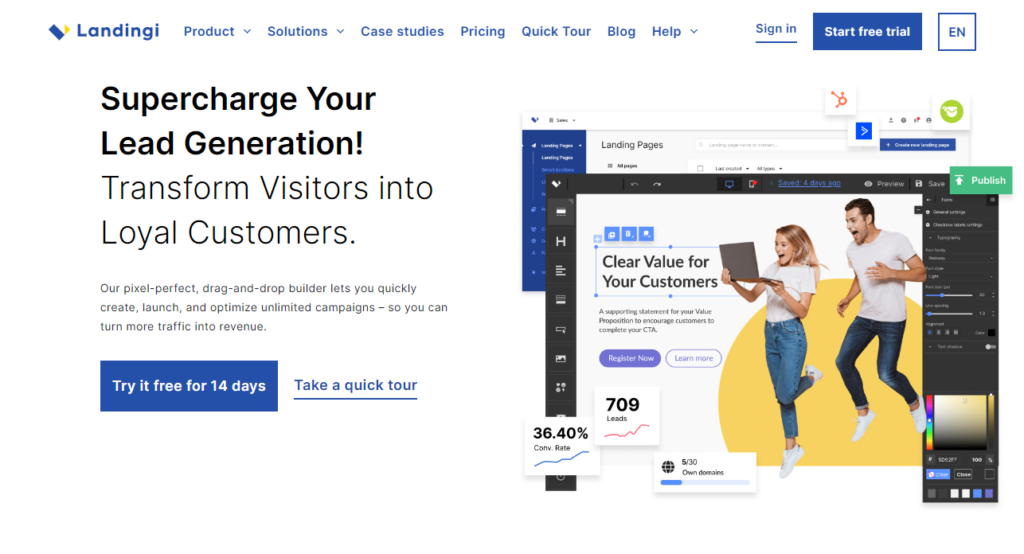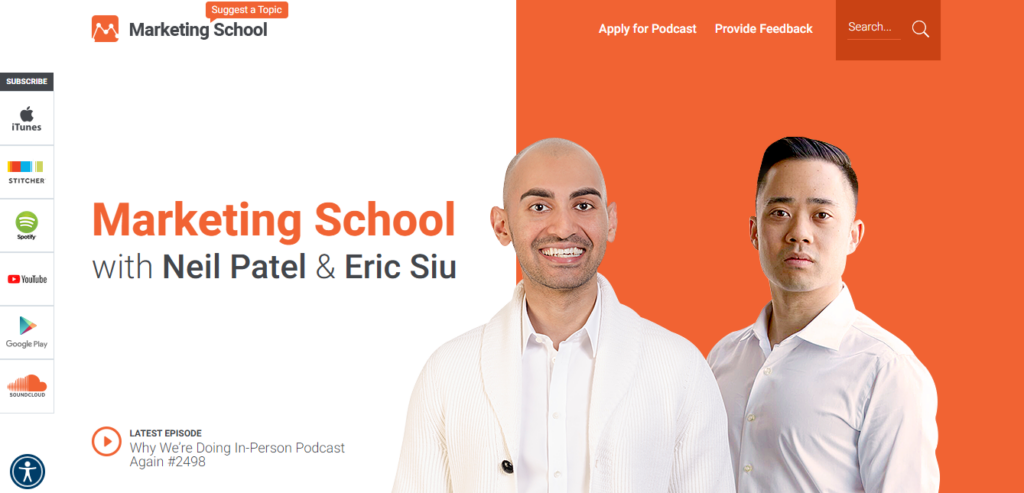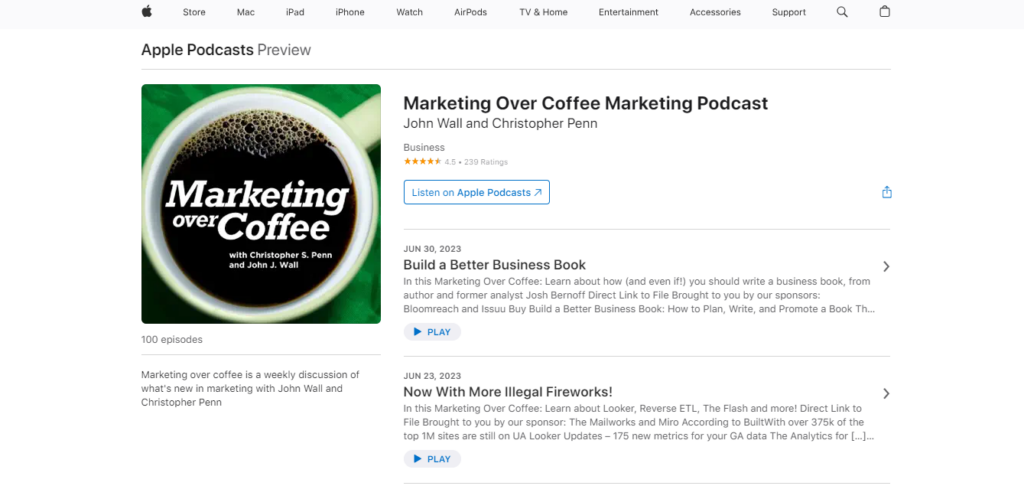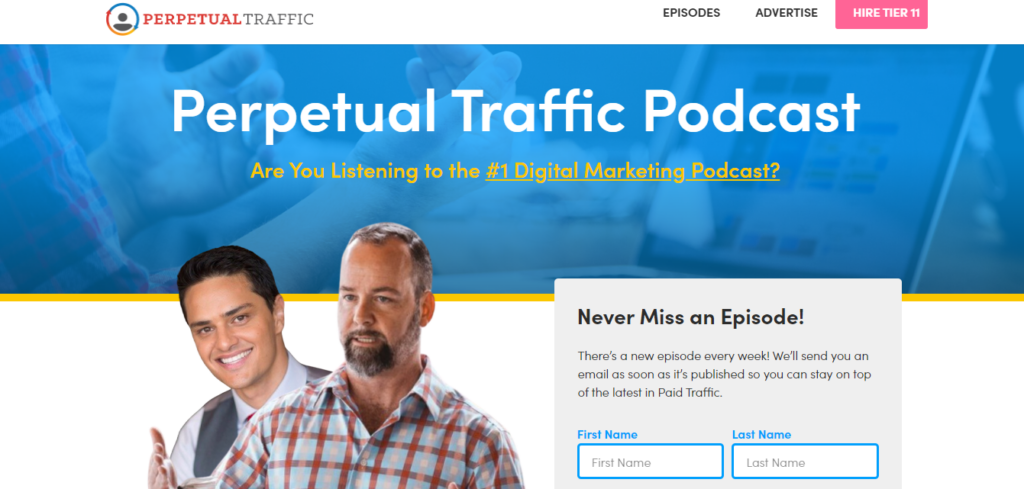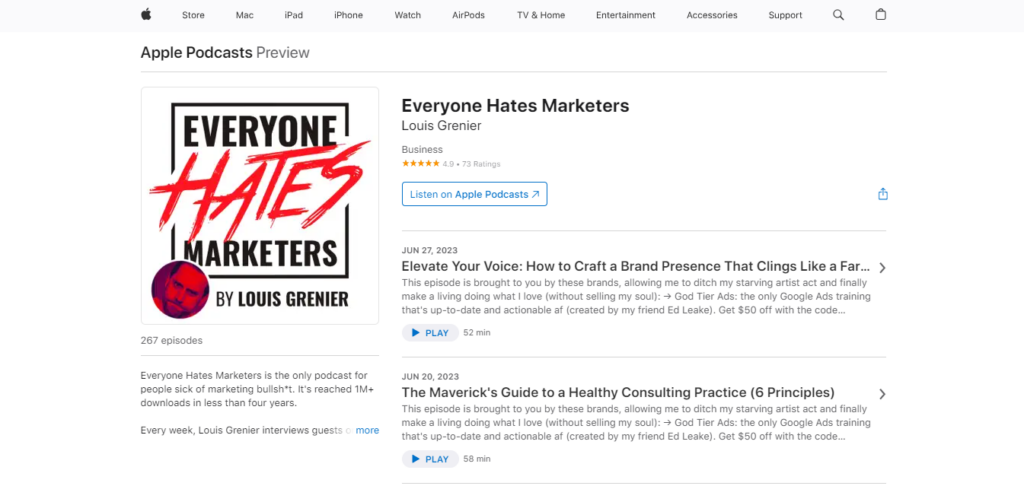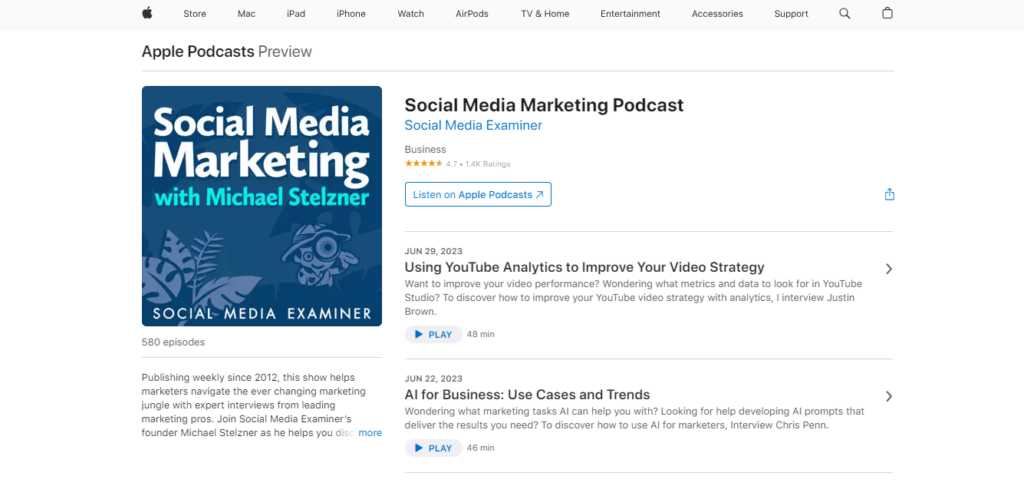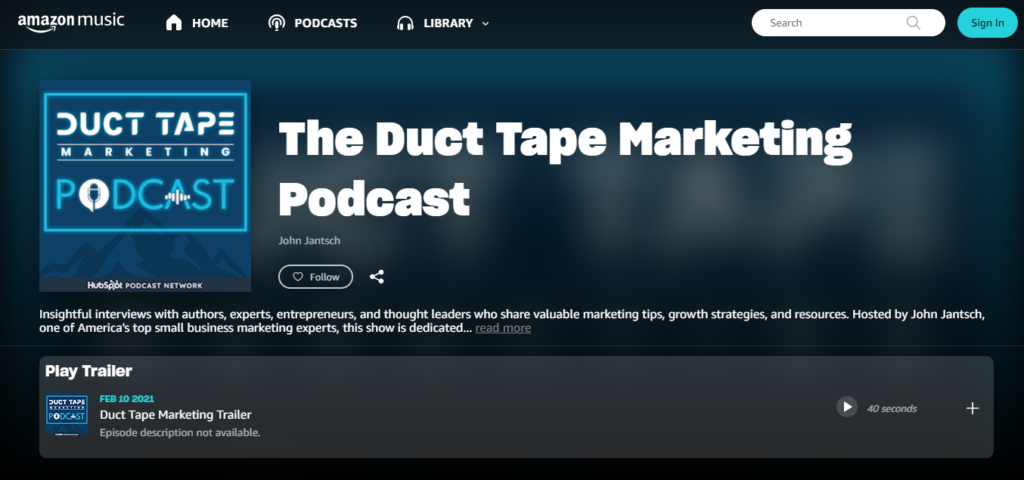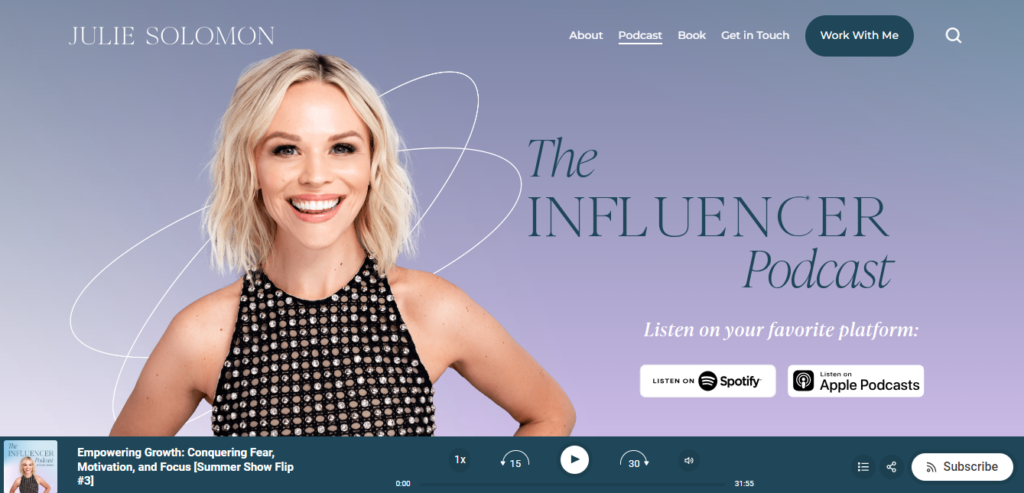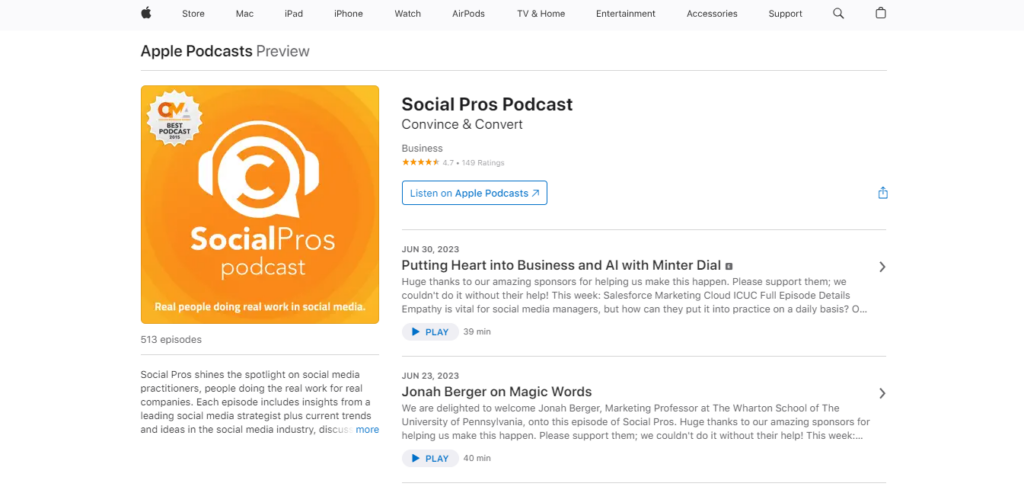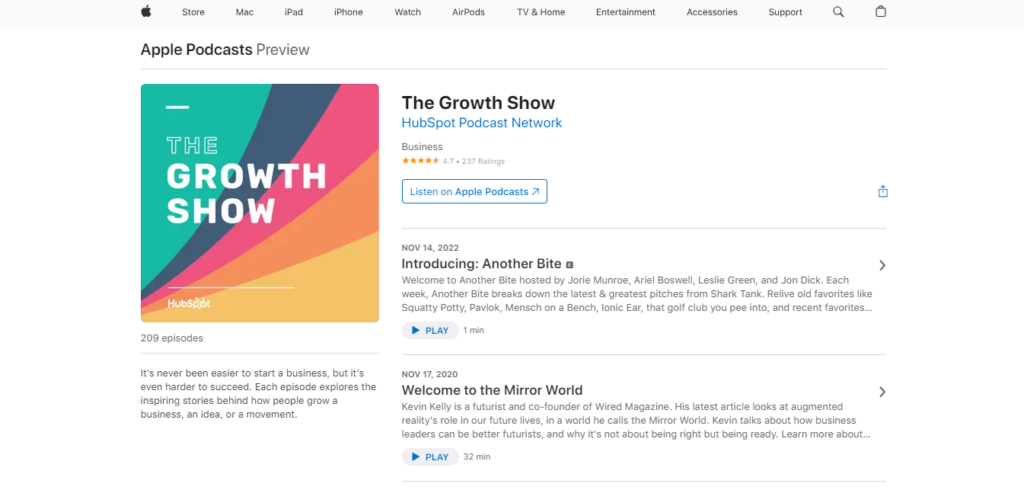Mastering SEO: How To Get Backlinks for Your Website

Global SEO professionals’ fifth focus for search engine optimization (SEO) in 2023 is link-building. This focus means that links have become more significant in boosting online presence.
Link-building involves acquiring websites to link you to your site. It is a crucial marketing strategy that builds your site’s credibility, trustworthiness, and authority.
Among the types of links obtained in link-building are backlinks. Without high-quality backlinks, you are missing one of the most critical criteria for search engine rankings.
However, earning backlinks is a complex process. You can’t just insert links on your content and call it a day.
So, why build backlinks, and how can you earn high-quality ones?
| Key TakeawaysBacklinks are links from other websites that point to your site.Your backlinks must be high-quality to ensure higher search rankings.High-quality backlinks should be authoritative, relevant, natural, and labeled do follow Some ways to get backlinks are publisher outreach, link reclamation, and broken link-building. |
Understanding Backlinks
Backlinks—also referred to as one-way links, inbound links, or incoming links—are links with anchor texts from one website pointing to yours. Besides content, you can place these links on images and navigation buttons.
Backlinks are “votes” of quality used by search engines to assess web pages. These votes indicate your site’s authority, quality, and relevance. When your web page has many relevant and high-quality backlinks, you have a better chance of getting higher search rankings that boost organic traffic.
The Importance of High-Quality Backlinks in SEO
Although backlink building is time-consuming, the results are rewarding. Here are the benefits you can reap from high-quality backlinks:
Boosts your search rankings
High-quality backlinks indicate that your web page is relevant, valuable, credible, and authoritative. These aspects strengthen your site’s trustworthiness, resulting in higher search rankings.
When your site ranks highly on search engine results pages or SERPs, it appears on the first page or at the top of search results. With higher search visibility, more users can see and become interested in your content.
Directs more traffic to your site
Since more users see your content, you can direct more traffic to your site.
Traffic refers to website visitors and you measure it by “sessions.” Sessions are groups of user interactions within specific time frames. For example, a single session can have multiple transactions, page views, click-through rates, adding items to a cart, and browsing web pages. They determine your site’s effectiveness in engaging visitors.
The more traffic your website has, the more it can gain conversions. However, website traffic must be organic.
Organic traffic involves users who visit your website naturally, known as free traffic. Free traffic means you’ve generated visitors from unpaid search results. In contrast, paid traffic is generated through pay-per-click advertising (PPC), which pays publishers each time a user clicks your website.
While both types of traffic have their fair share of pros and cons, organic traffic is generally more credible. Sure, it takes time, but it is cost-efficient. It can continue driving visitors even after months or years of publishing your content.
Enhances user experience
High-quality backlinks help users navigate relevant pages better, improving user experience. For example, when users click your backlink, they won’t encounter issues regarding loading time, navigation, and accessibility.
User experience encompasses your visitors’ experiences while interacting with your website. A positive user experience meets the visitors’ needs without interruptions. If visitors are unsatisfied, you might need to refine certain web page features, such as backlinks.
Moreover, relevant, authoritative, high-quality backlinks provide additional resources and references that help users understand topics more deeply. They support the information you present in your content.
Suppose a user reads a digital marketing article mentioning artificial intelligence (AI), which links to your web page. When interested in learning more, this user will click your backlink for an in-depth understanding of AI. With relevant and valuable content, they won’t need additional research to clarify specific points, enhancing the user experience.

Characteristics of High-Quality Backlinks
Not all backlinks are identical. One quality backlink can outweigh a thousand low-quality ones, so you must focus on acquiring authoritative backlink opportunities.
But what makes a high-quality backlink? Let’s find out below.
They have high domain authority
Backlinks should come from reputable websites to ensure high domain authority.
Domain authority, or DA, is the metric score developed by Moz that predicts how likely your website would rank in search engines. This score ranges from one to 100, and higher scores lead to greater chances of ranking on SERPs.
Besides Moz, SEO tools like Ahrefs and Semrush have developed their own metric. You can access their domain checkers for free. Although free, it has limitations, so you’ll pay for advanced domain analysis tools.
Remember that domain authority isn’t a ranking factor. Google and other search engines don’t use it to determine your website’s ranking. But while it won’t boost your ranking, it will still help you assess your site’s performance amongst competitors.
They include target keywords in anchor text links
An anchor text is the clickable, highlighted text that directs one page to another. It is also called a link label, title, or text.
Ideally, anchor text links should reference information related to the topic from the source page, as they provide context to users and search engines. Users are informed about what they’ll see on the linked pages, while search engines use them to rank and index web pages. Thus, anchor texts should have target keywords.
Target keywords are the keywords you want to rank for. They are niche-related phrases that most users use in search engines when finding information relevant to your business. They also enable search engines to understand the connection of the source page’s content to your linked pages.
However, you shouldn’t use similar target keywords for every anchor text. Anchor text diversity is necessary to attract organic traffic. You should build backlinks with keyword variations—a combination of target, long-tail, and topic-specific keywords. This way, you have natural anchors that boost free traffic.
They are dofollow links
Search engines ignore nofollow links. Nofollow links have “nofollow” HTML tags that don’t impact search rankings. These tags signal the search engines not to count them to your backlink profile.
Thus, your backlinks should be do-follow links.
Dofollow links, or follow links, are links without “sponsored” or “nofollow” attributes. Search engines can index and crawl them as quality votes, influencing your website’s rankings.
Dofollow links are generally the default backlinks that distribute website authority—also known as link juice. Meanwhile, nofollow links suggest that referring domains don’t recommend the destination websites, which won’t contribute to your website’s authority. These off-page SEO metrics are objective assessments that prevent cheating with rankings.
Suppose you find great content that mentions your brand, such as customer reviews and case studies. This content is an opportunity to link to your site to familiarize users with your business. In this case, you want to earn a do-follow backlink from the source page so search engines recognize another vote of quality for your website.
They are natural
Backlinks should be natural—website owners should link to your site because the content provides value, not because you paid them. This means you earned them through high-quality content and genuine partnerships.
Other characteristics of natural backlinks include:
- Referring domains voluntarily place them
- They have diverse referring domains
- You acquire them over time, not within short periods
- They are earned ethically, not through link buying or link farms
Conversely, unnatural links attempt to manipulate the SERPs. Rather than being organic, they mislead search engines into ranking your website higher.
Google strictly provides the most relevant and high-quality content, so they have regulations against these unethical practices. When Google detects unnatural links from your website, it will issue a warning that violates the webmaster guidelines.
Unnatural links can also harm your SEO in the following ways:
- Decreases reputation, making Google and users perceive your site as untrustworthy
- Reduces traffic due to less visibility, temporary search result blocking, or complete search result removal
- Getting flagged as spammy
The referring domains are relevant to your website
Referring domains are websites where your backlinks come from. You can have backlinks on multiple referring domains simultaneously.
Search engines assess whether your referring domains are relevant to your website. For instance, if your content focuses on coffee, backlinks from coffee websites are more relevant than unrelated ones. The more related your referring domains are, the higher your ranking can be.

How To Get Backlinks
Acquiring high-quality backlinks requires hard work. Moreover, it involves robust link-building strategies.
SEO strategies are also unique for each business. One tactic may apply to you but not others, and vice versa. Still, there are practices applicable to all.
Here’s how you can earn high-quality backlinks:
Create and publish skyscraper content
The skyscraper technique involves finding link-worthy content as a reference to publish skyscraper content—which is the better version of the reference article. Then, you’ll identify the competitor’s referring domains and ask their site owners to link to you instead. These referring domains are your link prospects.
A skyscraper content possesses the following features:
- More relevant and up-to-date
- Contains more credible information and sources
- More comprehensive
- Presented more efficiently
Let’s say you sell a content marketing tool, and your target keywords are “content marketing best practices” and “best content marketing practices 2023.”
You’ll find the top related content pieces for these terms when you enter them in Google’s search bar. Run these pieces of content in a backlink analysis tool to identify their backlinks and referring domains. Then, put them in a spreadsheet to scale down your best link prospects and content references.
Afterward, create content based on your scaled-down list. Reach out to your chosen prospects once your skyscraper content is live.
Reclaim unlinked brand mentions
Reclaiming unliked mentions, or link reclamation, involves keeping tabs on your brand mentions on blogs or news.
For example, a publisher mentioned your brand but didn’t link to your site. Link reclamation allows you to ask them to provide proper link attributions. You can do this for every web page with unlinked mentions, including employee features, case studies, event features, interviews, podcasts, and statistics.
The great thing about link reclamation is that it produces a win-win situation—you earn high-quality backlinks. At the same time, publishers provide a better user experience. This way, both sides obtain better chances of getting higher search rankings.
You can monitor your brand mentions with a simple platform like Google Alerts. However, if you want more comprehensive insights, use SEO tools with advanced features and data analytics.
Get other publishers to cite you as one of their sources
Your knowledge and expertise allow publishers—like bloggers and journalists—to cite you as their source.
With credible information and reputable domain authority, bloggers and journalists will likely quote you, helping you earn backlinks. Additionally, becoming their trusted source helps increase brand awareness and drive more referral traffic.
To get bloggers and journalists to cite you as one of their sources, subscribe to Help A Reporter Out (HARO).
HARO is a free service where expert sources like you connect with bloggers and journalists looking for contributors. Here’s how to join this service:
- Go to the homepage and click the three horizontal lines at the upper right corner
- Scroll down a bit and choose Sign Up for the Basic Subscription Package
- Fill out the necessary details and verify the captcha
- Confirm your email address and set up your profile
- Monitor your email for source requests
- Submit pitches to source requests that match your niche and expertise
- Subscribe with the premiums to get advanced features. HARO’s packages have three tiers with reasonable pricing
HARO, however, announced that the service is moving to a new app called Connectively. More details are yet to be released, so keep an eye out on its website.
Acquire contextual links
Many websites feature additional resources called the Read More sections. These sections contain helpful contextual links that provide in-depth discussions of specific topics. You can embed them throughout the content or dedicate a standalone section.
For example, a web page about creator marketing will link to additional resources about influencer outreach.
Here’s another example from respona.com:
The key to getting quality contextual links is choosing the best link prospects. You can find them by researching articles with existing Read More sections and content relevant to your promoted web page.
If you have a new social media case study, you can look for articles discussing social media marketing trends that recommend additional resources.
Search these articles by entering the following query prompts in the Google search bar:
- social media marketing trends inurl:blog intext:” Read more”
- social media marketing trends inurl:blog intext:” Recommended articles”
- social media marketing trends inurl:blog intext:” Recommended reading”
Conduct outreach to bloggers and journalists
Another way to get backlinks is through publisher outreach. It involves connecting with bloggers and journalists and sending outreach emails to ask them to link to your site.
However, publishers are often bombarded with excessively promotional outreach emails that won’t provide value. For this reason, you must ensure your pitches stand out.
Here’s how to write a winning outreach email:
- Create a straightforward but enticing subject line
- Write an engaging introduction, preferably praising the site owner’s work
- Emphasize why it’s beneficial for the site owner to link to your site
- Keep the pitch simple and clear
- End the email with an encouraging message that says you’ll provide more details when they reply with interest
Don’t be discouraged when you don’t receive a response immediately. Your email could’ve been buried, or the publishers may still be busy. Send a follow-up email within two to three business days to bring your email to the top of their inboxes.
Obtain “Best X” link mentions
Consumers search for available options before purchasing products or services. For example, they browse comparison articles like the “Best Budget” for their desired items to see what expert sources recommend. These articles are called Best X articles.
Best X articles are popular formats in content marketing and guest blogging. They are informative pieces of content that recommend top-rated products or services under specific categories. Consumers use these articles as buying guides to make informed purchasing decisions based on tests, reviews, and expert opinions.
The X refers to the specific products or services being ranked. For example, a “Best Smartphones of 2023: An Honest Roundup” article lists the top smartphone choices for consumers in 2023. It includes numerous options, and each review is based on consumer needs, average budget, durability, reviews, and brand reputation.
Getting featured in Best X articles is a great way to earn backlinks that promote your brand and entice consumers to buy your products or services.
Like acquiring contextual links, you’ll need to search for high-ranking websites that publish roundups. Then, curate a spreadsheet list of your link prospects and scale it down based on domain authority. Use a backlink analysis tool for comprehensive insights.
Once done with your best link prospects list, write a persuasive pitch in preparation for outreach. Ensure your pitches stand out so the website owners find your offers valuable.
Revamp your old content
Google stores, crawls, indexes, and ranks hundreds of billions of web pages. As such, old content gets buried in the search engine due to saturation.
For this reason, revamping old content is a worthwhile way of getting backlinks.
To revamp old content, find old articles that haven’t been touched in a while. You may use a content management system (CMS) solution to ease manual work. Afterward, create a list and run each web page in a backlink analysis tool.
Check the number of backlinks on each web page. If one has numerous authoritative backlinks, refresh it with new and more relevant data. Once the updated content is live, inform the referring domains about the new version to update your backlinks.
Publish Ultimate Guide articles
Ultimate Guide articles are pieces of content that provide the most comprehensive explanation of different topics. They cover sufficient information, reducing the need for users to do additional research.
Ultimate Guide articles attract backlinks by providing comprehensive resources that bloggers and journalists can use to reference information. For example, when authors briefly mention SEO in their content, they can link an Ultimate Guide about SEO.
Here’s a step-by-step guide for writing and publishing an Ultimate Guide content:
- Find and choose a topic that doesn’t have too many ultimate guides
- Outline the headings and sub-headings of your article
- Write your Ultimate Guide and cover all the necessary details
- Publish your article and wait for referring domains to link to your web page
- Alternatively, you can find articles briefly mentioning the topic of your ultimate guide and reach them out
Find and fix broken links
Finding and fixing broken links is commonly known as broken link-building. It involves reaching out to other websites with broken links and suggesting they update with links to your web pages.
Naturally, your page should have good content, so it’s valuable for publishers to swap their broken links with yours.
Broken link-building is another win-win situation for you and the publishers. While you earn quality links, your links help the publishers fix a website error, adding value to webmasters and improving their readers’ user experience.
Here are two ways to replace broken links:
- Find similar or relevant web pages on your website to replace the broken links
- Search for dead pages (404 errors) that used to have many links. Recreate better versions and reach out to the referring domains
Whichever route you choose involves a comprehensive SEO tool to identify broken links and outreach to pitch your unique selling proposition.
Search for backlink opportunities from referral sources
Another way to gain backlinks is through referral sources. They are platforms that help clients discover your brand, products, or services. Referral sources include LinkedIn, social media channels, and Google searches. Many website owners might have been offering you backlinks through these platforms.
Curate a list of the websites providing backlink opportunities. Narrow it down based on domain authority, and study your top choices’ content. Afterward, understand their preferred content. Find relevant existing articles within your site or create content related to their published articles.

Leverage outbound links to establish partnerships
Outbound links are other excellent sources of backlink opportunities. These links point from your site to other websites. All you need to do is search for your outbound links and send outreach emails to establish partnerships.
You can identify your outbound links through SEO tools. These platforms will show your top outbound links that get the most clicks. But this doesn’t mean you’ll automatically reach out to all of them.
You should scale down your top outbound links based on domain authority and relevance by creating a comprehensive spreadsheet. Then, understand their content preferences, create relevant content, and publish your articles.
Once your articles are live, conduct outreach. You can also contact the website owners directly and ask if they’re willing to collaborate with you. For example, ask the site owner if they want to partner for a case study. If the prospect accepts, you’ll earn new backlinks that drive organic traffic while forming a valuable relationship.
Use infographics
Infographics are among the most common ways to earn backlinks. These images visualize data using charts and graphs, breaking down complex concepts into more straightforward visual explanations.
Infographics contain relevant data—facts or statistics—about specific topics. When yours possesses valuable information, you can earn multiple backlinks and referring domains in a single infographic. Visuals like diagrams and one-page templates are ideal if infographics don’t match your brand.
You can also provide free online photo galleries. These galleries let you share free high-resolution images for content creators, bloggers, and journalists. You can upload photos and build galleries on sites like Unsplash, Pexels, Pixabay, and Freepik.
Go for guest posting
Guest posting, or guest blogging, involves writing articles for other websites. Guest bloggers generally write blogs for websites within their industry.
Many websites offer guest blogging through contributor accounts or Write For Us sections that allow everyone to write articles and get featured. They can also link to your site in the author section or within the content.
You can find websites that accept guest posting through a simple Google search. Enter your target keyword with a “contributor” or “write for us” tag. For example, enter “digital marketing + write for us” and “digital marketing + contributor.”
Google then generates filtered results that show websites that allow guest blogging. Here are the steps for choosing the best link prospects for guest posting:
- Choose the top-ranking sites with high domain authority
- Check the types of content published on these websites
- Brainstorm relevant topics these websites haven’t published yet
- Write topic pitches that contain abstracts of what you’ll cover
- Send an outreach email, attach the pitch document, and wait for the response
Build valuable and free tools
If you’re a tech-based company, building free and handy tools—like calculators and template generators—is ideal for earning backlinks.
Here’s how to get backlinks through free tools:
- Conduct keyword research to see what comes up under “tools,” “generators,” and “templates” within your niche
- Check the top 10 tools in the search results
- Identify which tools receive the most backlinks in a backlink analysis software
- Build a better version of the tool, something that enhances the user experience (e.g., a better interface and more customizations)
Use online directories
While directories are traditionally known as yellow pages, many online directories are now available for businesses. Directories are also helpful for local SEO.
Here’s how to build backlinks for online directories:
- Choose directories with high domain authority and a good reputation
- Set up your business profile and highlight the necessary information
- Include relevant keywords in your submission
- Regularly update your directory information
High-quality directories are directories most consumers use—TripAdvisor, Google Business Profile, and Yelp. Moreover, leveraging local and niche directories strengthens your SEO. Local directories aim to boost your local search visibility, while niche directories are industry-specific lists that focus on enticing consumers who show genuine interest in your products or services.
Leverage top-performing content formats
Specific types of content perform well on search engines. These content formats include the following:
- What and Why Posts: “What” posts are informative, descriptive, and educational. Meanwhile, “why” posts are persuasive and analytical
- Videos: This format is ideal for consumers who prefer actual demonstrations of products or services
- How-Tos: Articles that explain how to do something in a step-by-step format
- Listicles: Articles that present information through detailed and formatted lists
Remember that you shouldn’t just publish these formats carelessly—your content must be high-quality to get other websites to link to your site.
Get listed on resource pages
Resource pages are websites that curate links to valuable tools, resources, apps, services, or products. Getting listed on these sites can help you build high-quality backlinks.
Here’s how to get backlinks from resource pages:
- Enter your target keywords with “resources,” “resource pages,” or “resource lists” tags
- Run the sites in your backlink analysis tool
- List the top-performing resource pages
- Send outreach emails
Study your competitors’ backlinks
Stay informed about the marketing landscape by studying the competition. You should look into your competitors’ backlinks and assess their strategies.
Use your backlink analysis tools to identify your competitors’ referring domains. Scale down the list, then reach out to the website owners to get them to link to your site instead.
Provide testimonials
Most websites showcase testimonials as social proof of their products, tools, or services. They typically display these statements on their homepage.
So if you’re a regular user of certain services, provide testimonials in exchange for backlinks. You can also find top-performing websites. Use their products or services for a few months and write testimonials.
[pro_tip id=”2947″]
Get High-Quality Backlinks Through SearchEye
Backlink building and acquisition is an intricate process that requires attention to detail. You should provide high-quality content that brings value to get other websites to link to your page. Concurrently, outreach is a crucial step that should pique publishers’ interest in the first few sentences.
Finding link-building opportunities can be a hassle if you don’t have the right resources. Thus, partner with SEO experts like SearchEye to gain access to advanced deliverables, backlink analysis, and other link-building services. We can help you maximize your SEO strategies and save time by streamlining the link-building process.
Earn high-quality backlinks that bring success to your business. Partner with SearchEye today to elevate your link-building and SEO strategies.
[faq_post id=”2947″]
Frequently
Asked
Questions


Being featured by media agencies or professionals on outlets like television, radio, newspapers, and websites is still one of the best ways for brands to garner exposure. It helps you build credibility and increase your reach.
Media attention isn’t just for the big players either. It’s within reach for all ventures (even startups), adding an exciting challenge to the mix.
In this guide, we’ll discuss essential information about media coverage. Learn about the different types of media coverage and their benefits. Plus, we’ll provide all the best practices for attracting journalists, bloggers, media agencies, and other similar parties.
Key Takeaways
|
Understanding Media Coverage
Media coverage or mention is a practice when media outlets or professionals feature a person, company, or organization in a story. These come in various forms, including news articles, reviews, and recommendations on different offline and online platforms.
Getting media attention and coverage is vital because they help shape public opinion. People often turn to media entities for relevant stories, whether positive or negative. Gaining more positive mentions could boost your brand awareness and build credibility, among other benefits.
Today, various media coverage types are available to help brands in many ways. These are the following.
Earned media
Earned media is a type of free press an individual or organization receives from journalists, bloggers, and media agencies. Brands consider this the best media coverage because they earn it organically, meaning media professionals see a potential story within the business they want to cover.
It’s worth noting that this type of media doesn’t come from a partnership or sponsorship. As the name suggests, brands earn them because they possess something compelling that the audience must know about. When that happens to a company, its credibility and reputation elevate, helping them convert more people.
The best example of earned media is when journalists make a feature article about how a company provides game-changing solutions to the market. Another example is when a blogger provides an in-depth product review of a brand on their platform.
Owned media
Owned media is any content an organization or individual develops and controls. These include blogs, social media posts, and press releases.
Generally, owned media refers to digital outlets like company websites, social media accounts, and mobile apps because most businesses today have them. Through these outlets, brands can publish any stories without editorial guidelines or restrictions media agencies have.
If done correctly, they can create relatable content and showcase themselves as industry leaders, increasing their chances of attracting media professionals.
Moreover, owned media provides long-term value to brands in all industries. Companies regularly producing quality content can boost their search engine performance, making it easier for potential customers and media partners to find them.
The best part is that, like earned media, this type of coverage is cost-effective. For instance, brands can launch a social media page and publish content for free.
Paid media
Paid media is any advertising or promotional content displayed in a media outlet paid by an organization or individual. Various traditional and digital marketing channels allow brands to invest in ad placements or sponsored content to reach their target audience. The most famous examples are TV and radio ads, social media ads, and website banner ads.
While paid media doesn’t have the same organic effect as earned media, it still has many benefits. To start, it allows brands to reach a broad and specific audience, significantly boosting brand awareness and visibility. These targeted ads, especially those conducted online, also provide detailed analytics and reporting, helping marketers track and measure their performance based on concrete data.
It’s also worth noting that paid media ads on traditional outlets like broadcast and print help elevate a brand’s credibility. For instance, people still view TV ads as one of the best signs of a company’s success compared to website banner ads. Many online users are even reluctant to trust the latter because they often associate it with malware attacks.
Benefits of Gaining Media Coverage
As briefly discussed above, getting media coverage or mentions benefits brands in many ways. We’re diving deeper into the most notable advantages of gaining media attention and leveraging other types of coverage below.
Boost brand awareness
Gaining media mentions online and offline is an excellent way to increase your visibility in various channels. When media outlets or professionals feature your business on their platforms, they expose it to a larger, potentially untapped market.
Many brands, especially small businesses, don’t have access to all media outlets. Being mentioned on channels without prior exposure will help them expand their reach and convert potential customers.
Aside from that, media coverage can open doors for new opportunities like collaborations, partnerships, and sponsorships. By improving exposure in various media outlets, brands can increase their chances of tapping potential investors and suppliers, helping them expand their network immensely.
Build credibility and trust
As discussed, gaining media mentions from trusted journalists and similar entities is an excellent way to elevate brand image and reputation. Being featured by reputable third-party individuals or organizations is always better than talking about yourself on your own platforms.
However, it’s not to say that owned and paid media can’t boost credibility and trust. Publishing quality content online through owned media helps showcase a brand’s expertise, making it a reliable source of information in the industry.
When that happens, they increase their chances of boosting their search engine optimization (SEO) ranking and getting recognized or featured by various media outlets.
As mentioned above, using paid media also helps elevate brand credibility because people often associate ads, particularly on broadcast and print outlets, as a sign of a successful company. When you invest in these channels, you position yourself as the better option in your industry, providing you with a competitive advantage in your field.
Generate more conversion
Lastly, the best thing about having positive media coverage or mentions is that it helps brands generate more leads and sales for their business. Media appearances will allow you to tell compelling stories that attract your audience.
Combine that with all the benefits mentioned above, and you significantly retain your existing customers and convert new ones.

Types of Media Channels
Today, brands can acquire media mentions from online and offline outlets. The following are all the media types where you can get effective coverage.
Broadcast media
Broadcast media refers to video or audio content transmitted to a mass audience through electronic mediums, particularly television and radio. Generally, these outlets help simultaneously communicate a message to the public at a given time, ranging from insightful, promotional, or entertaining.
Despite the emergence of streaming platforms and various digital marketing channels, broadcast media still has a powerful influence on people, primarily because of its unparalleled capability to reach a broad audience.
Millions of people worldwide still rely on broadcast media for news, entertainment, and information on current events. It’s why people find brands featured on these channels appealing and trustworthy.
Unfortunately, effective as they are, broadcast media remains a costly option for brands. Unless your company gets featured organically by a news outlet or similar agencies, paying for an ad placement will be expensive. Plus, exposure doesn’t always guarantee the best results. To benefit from a TV and radio ad, you must create a campaign that will resonate well with the target audience.
It’s also worth noting that broadcast media is a one-way communication. That means brands can send a message through these channels but can’t receive one from their audience.
Print media
Contrary to what many think, print remains an important medium in today’s highly digital world. For instance, many studies confirm that the younger generation, particularly the phone-obsessed Gen Z, is surprisingly becoming more invested in printed books than online ones.
Print media outlets like newspapers, magazines, billboards, and flyers are popular and effective brand advertising channels. Aside from its broad reach, many consider these outlets more credible than broadcast and digital because print media publications often conduct rigorous fact-checking and quality control before green-lighting a project.
Print media allows brands to reach people depending on geographic location, interest, or language. For example, if your brand wants to attract interior designers or architects overseas, you can buy ad placements in home decor magazines abroad to reach them.
Meanwhile, like broadcast media, print provides one-way communication only. They could help boost brand reputation and increase reach but will not guarantee better engagement. Plus, ad placements in newspapers, magazines, and billboards are expensive. The best option to benefit from print media without costing too much is to get featured in newspapers and magazines.
Digital media
Digital media are the most popular option for businesses of all sizes today. Channels like websites, social media, and email provide brands with incredible reach, inexpensive solutions, and, most importantly, engagement with potential customers.
With digital media, the target audience can leave comments and send feedback to a brand’s online campaign. Through these channels, brands can attain a high engagement rate, which can help increase their conversion.
The best part is that many outlets offer concise targeting, allowing brands to reach their target audience based on demographics, interests, and behaviours. Plus, these channels provide valuable metrics that brands can use to boost their campaigns.
Digital media also allows brands to launch campaigns easily and to scale them depending on your budget or any significant changes. Unfortunately, with so many accessible tools and platforms, falling behind on high-performing campaigns is easy. To stand out in your field, you must regularly produce relatable and authoritative content relevant to the target audience.
Moreover, finding success in various digital media outlets might take time. Ads on broadcast or print media immediately appeal to the target audience. With digital media, brands need continuous efforts to boost their visibility and reputation in the industry.

Key Steps To Gaining Media Coverage or Mentions
As mentioned above, utilizing all media coverage benefits brands of all sizes. The following are the best ways to use or gain media coverage for your brand.
1. Establish your goals
Before conducting media outreach or the steps mentioned below, having a goal is best to ensure you effectively attract journalists or media agencies. This step requires intensive research because it involves various factors to create a concrete objective.
First, you must develop a story idea you want to pursue and want media professionals to notice. You must be able to share who you are, what you do, and your brand’s values. At the same time, your story must provide a solution to your field for it to stand out.
Next, identify your desired journalists or similar entities. Note that not all media outlets fit your target audience, meaning you must look for media contacts that are relevant to your field. Start by looking at industry publications to create a media list. Then, narrow this list by looking at your competitors and see which ones they’re targeting or using.
Finally, you must craft a timeline for the subsequent steps in this list.
2. Create compelling press releases
A press release is an authorized statement or communication piece issued by a company, organization, or individual to any media outlet. This content often aims to publicize newsworthy information, including new products, mergers and acquisitions, events, grand openings, rebranding, and special offers.
Publishing a press release is an excellent way to improve brand awareness by sharing company news, achievements, and developments. Because of these updates, existing and potential customers will understand your brand better and become more inclined to trust it.
Aside from that, a press release is an effective way to communicate with investors, shareholders, and ideal partners, like journalists and media agencies.
When drafting a press release, you should consider various factors to ensure success. For one, you should write it in a news-style format. It must have a concise headline, dateline, introductory paragraph summarizing the whole piece, and supporting paragraphs for added information.
It’s also worth noting that a press release must be concise and packed with all the essential information relevant to the story.
There are many ways to deliver a press release. Generally, brands send it to journalists, news outlets, and other media agencies. However, brands can also publish it on their websites. Third-party platforms allow brands to distribute press releases on news sites and similar platforms.
3. Build rapport with journalists and bloggers
Creating a solid rapport with journalists, media outlets, and other similar entities is crucial in getting regular press coverage. It’s also an excellent way to enhance brand credibility, especially if you build relationships with reputable journalists and media agencies.
Moreover, building an excellent connection with these professionals is a perfect way to ensure better storytelling for your business. Creating a relationship helps them understand your brand better, allowing them to craft stories that best represent your company and its products and services.
There are many ways to build relationships with relevant journalists, bloggers, or media agencies for your brand. First, follow their work online and show appreciation by sharing or promoting them on different platforms.
Another way is to stay in touch by engaging with them regularly online and in person. It’s also ideal to send them tokens of appreciation, like gift baskets, discounts, and other valuable items.
4. Develop a creative media kit
A media or press kit is an official package or collection of various promotional and informational materials a company provides to journalists, media outlets, and other similar parties. These materials boost media coverage or public relations efforts by providing relevant information, resources, and assets.
In addition, these materials are often provided in an organized manner. Typically, these items are arranged in a digital folder and sent to media entities. Brands also have the option to send physical copies of their media kits, but they’re often limited to vital documents and other printed information.
Media kits consist of various components. Some of the most crucial ones are company background, press releases, key facts and statistics, product and service details, and contact information. It’s also essential to include high-resolution images, logos, and graphics that media outlets can use when covering your brand’s story. You can also add some awards and recognitions to boost your company’s image.
Lastly, there are many reasons for brands to send out media kits. They can send them before announcing a new product or service, responding to media inquiries, participating in events, and organizing a press conference.
5. Use your social media pages
Building an incredible social media presence is an excellent way to stand out and get noticed by journalists, media outlets, and other similar entities. Popular channels like Facebook, LinkedIn, and X (formerly Twitter) are some of the best platforms for brands to showcase authority by sharing valuable content relevant to your industry and target audience.
Use these social media channels to offer insights and solutions backed by relevant research and data through various content forms. Doing so provides additional sources or potential story ideas to help journalists, media outlets, and other similar entities.
If they turn to your social networks for valuable information, you increase your chances of being featured on different channels, ultimately elevating your brand’s credibility in the industry.
Social media also allows brands to follow and engage with such professionals. You can use various platforms to communicate with them and share their work with your audience. Doing so will help you build an excellent relationship with media entities.
6. Publish authoritative content
As discussed earlier, becoming a thought leader is an excellent way to gain media attention. The best way to do that is to publish authoritative content relevant to your industry. Doing so will help increase your chances of being noticed by media professionals looking for helpful industry sources and story ideas.
Brands can leverage various content forms to showcase their expertise. Aside from blog posts, they can publish creative visuals, videos, and podcasts. The key is to utilize relevant data, conduct thorough research, and provide in-depth content that’s easy to understand to avoid alienating people who have yet to learn about the industry.

7. Participate in industry events
Joining, hosting, or presenting at events provides an excellent opportunity for brands to attract journalists and media agencies. For one, launching an event or giving a presentation in one allows you to share your insights, knowledge, and solutions. When you do that, you position your company as an industry expert, increasing your chances of getting more media coverage.
Being present at relevant industry events is also an excellent way to get media mentions. Even if you aren’t giving lectures or demonstrations, attending these gatherings will help journalists and media outlets see you as an aspiring industry leader, fostering a humble and relatable image.
Moreover, attending events allows you to build your network of journalists, bloggers, influencers, and media agencies. You can engage with them at an event, appreciate their work, and pitch stories for their platforms.
8. Leverage search engine optimization
SEO remains one of the most significant players in digital marketing. Online users continue using search engines like Google and Bing to acquire information. That includes journalists and media outlets looking for additional sources or story ideas online.
Aiming for an excellent SEO ranking is a perfect way to be a top choice in the search engine results pages (SERPs). Doing so will allow you to attract potential customers, journalists, and media agencies. Today, SEO encompasses various practices to ensure excellent ranking, including keywords, content, responsiveness, and site speed. It’s crucial to know that SEO is an aggressive and evolving process. To stand out in this channel, brands must watch out for various SEO trends and optimize their websites accordingly.
[pro_tip id=”2865″]
Get More Media Attention
Whether you’re aiming for broadcast, print, or online exposure, getting media coverage or mentions is a powerful tool for brands wanting to build their reputation, increase reach, and drive growth more effectively.
The key to gaining media attention for your brand is to develop intriguing stories, build relationships with journalists and bloggers, publish authoritative content across various online platforms, and more. It might be a stretch today, but if you make such a good impression and create excellent pitches, you could attract more prominent outlets like Forbes and the Wall Street Journal.
One of the many online platforms that can help brands elevate their credibility is Searcheye.
Through Searcheye’s various services, brands can craft authoritative content and reach many online publishers, allowing them to stand out and gain media attention. Visit Searcheye today and see how we can help out.
Searcheye offers a wide range of SEO and digital PR services that can elevate your brand’s brand awareness and authority. Visit us for more information.
[faq_post id=”2865″]







